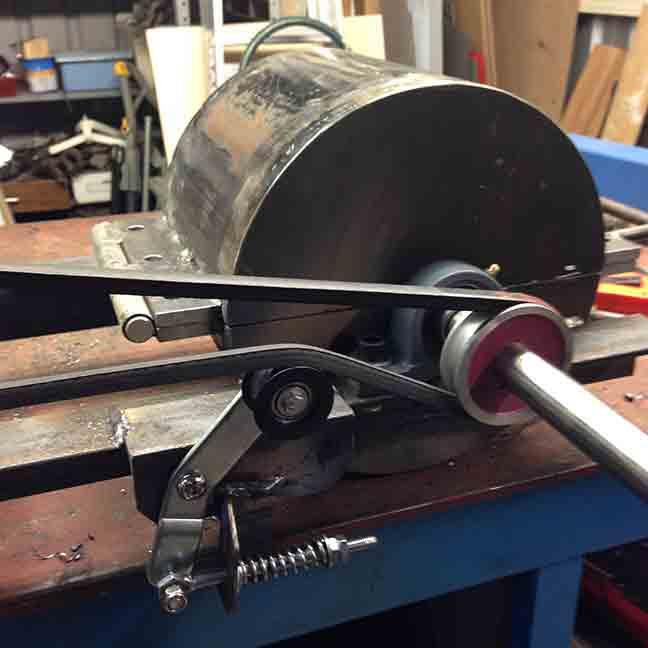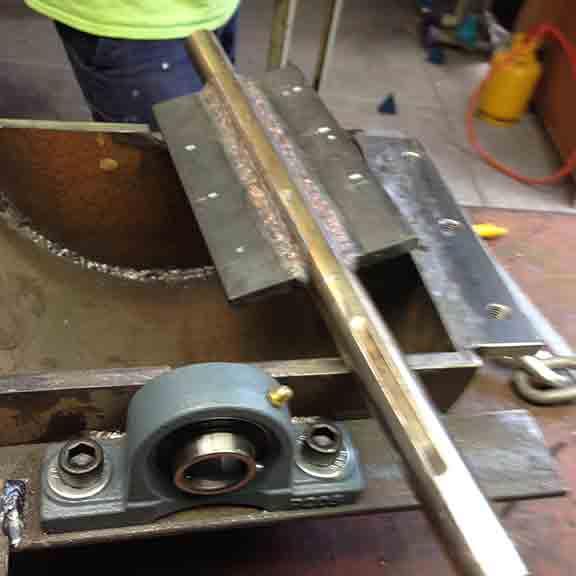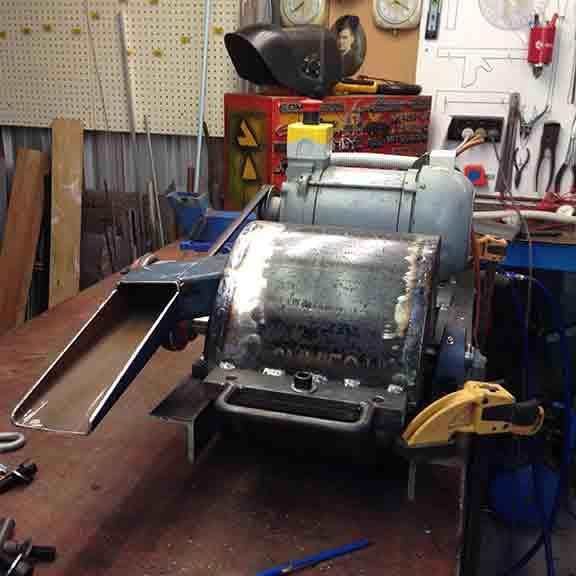- Joined
- Aug 3, 2014
- Messages
- 38
- Reaction score
- 35
cracka said:What are the specs on your motor?
Cracka.
The motor is 1 HP and designed to be outdoors (Waterproof). We will be running the mill wet so this is important.

cracka said:What are the specs on your motor?
Cracka.
HeadsUp said:When it comes to rotating mass , as diameter increases , the effect of balance / imbalance increases exponentially
did the shaft stay straight after welding the flat bar to it ? , if you mount the shaft in the bearings and give it a spin , is there any axial distortion showing in the shaft where the pulley mounts to it ? If you can rectify any distortion in the shaft it will decrease vibration in the drive significantly
You might want to countersink the holes that the D shackles go through and make the holes around 3 mm oversize to stop the D shackle pins from shearing off when the chain hits something between a rock and a hard place.
Did you find hardened load rated D shackles yet instead of soft mild steel ones ?
Will you have a safety switch "E-stop" mounted within reach in case it has an event during operation and you find yourself using both hands to hold on to it and one leg being used to kick the plug out of the socket ?
(Kidding) I am sure it will hold together nicely and those cast iron bearing blocks won't crack from the vibration for ages
:8
Seriously . Have fun with it and hope you find some good reef gold to get a payback for your work.

G0lddigg@ said:great project there Rickrofe cant wiat to see your results after s afew months in the field crushing rock.








flashinthepan said:great project rickrofe,, gotta get me one of them circle cutters for the plasma , save looking around for a suitable template , how did you decide on the optimum speed of the shaft or are you going to try it and see first ? i see its about 1-1 on the pullies ,is the motor 2400 rpm or so?
flash
Enter your email address to join: